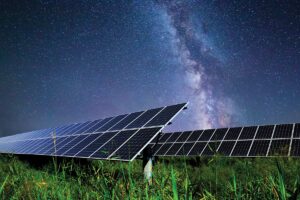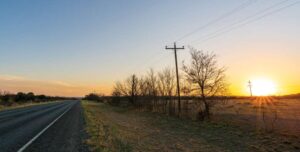From the earliest days of electricity, weather has presented the biggest challenges to reliability and safety. Severe thunderstorms, tornadoes, heat waves, heavy snowfalls, flooding and wind events have long put power lines and Illinois’ co-op crews to the test.
If you’ve thought storm events seem to be more frequent and more intense these days, you’re not wrong. The National Oceanic and Atmospheric Administration, which tracks weather and climate disasters that cause more than $1 billion in damage, reported an annual average of 18 such events between 2018 and 2022. That compares to an average of just 8.1 major disasters per year from 1980 to 2017.
While scientists and policymakers debate the causes of our wild weather, electric co-ops diligently work to prepare for it. From coast to coast, cooperatives are taking steps to harden the vital infrastructure that delivers electricity to homes, farms and other businesses. Co-ops have been upgrading equipment and connections to the nation’s electric power grid to better withstand disaster-level events. They’re also taking steps to prevent damage from happening in the first place.
For example, you may have noticed increased tree trimming and other vegetation management strategies. Keeping trees and branches at a safe distance from power lines reduces the potential for weather-related outages. While it’s sad to see these trees trimmed, many outages that occur every year happen when trees tangle with power lines.
Hardening the infrastructure includes a long list of other strategies. Co-ops are paying more attention to the condition of the system. If a power pole is damaged or weakened, strong winds might bring it down and leave a big area of the community in the dark. That’s why poles are periodically inspected and replaced when necessary.
When line crews aren’t fixing problems, they’re working just as hard to prevent them from happening. Those poles and the wires connecting them are frequent targets for lightning, so co-ops protect the power grid by installing devices that safely divert surges caused by lightning strikes.
It’s also why many co-ops are investing in sophisticated management systems, also known as the smart grid, capable of drawing attention to potential issues before they grow into problems. Paired with innovative technology like reclosers, these systems are engineered to keep the power flowing even in the toughest weather conditions … or when a squirrel makes a poor choice. Co-ops are also taking steps to protect substations and other outdoor equipment from severe weather events.
Considering the impact of potential weather disasters and implementing steps to prevent damage is just one more example of your electric cooperative’s dedication to making sure power is always ready when it’s needed most.










